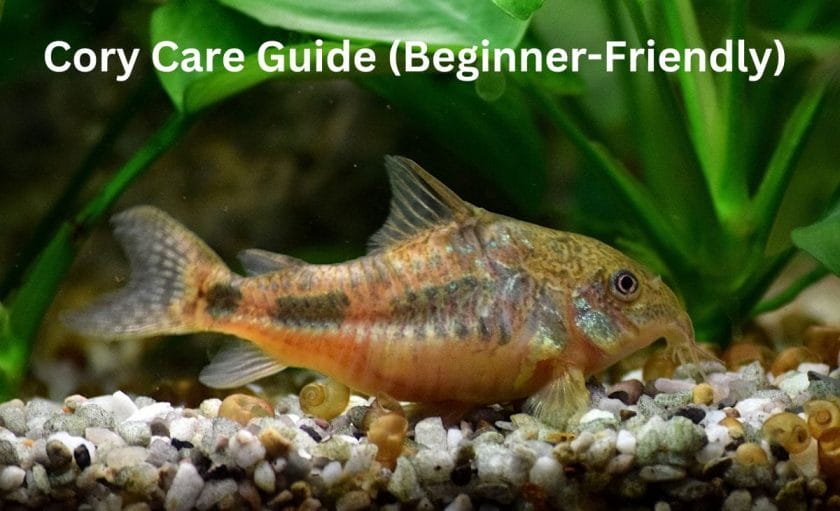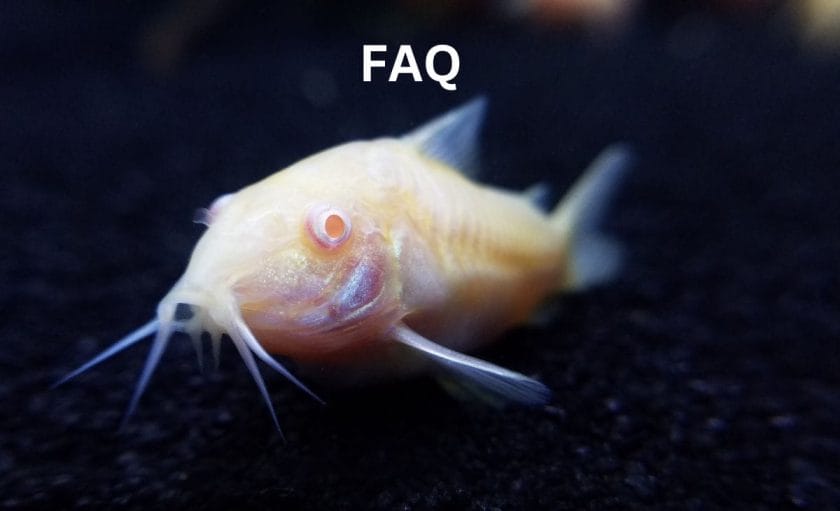Cories are popular in many freshwater aquariums, as they come in a variety of colors, species, and sizes, but are they suited for beginners?
Cory catfish are great for beginners and require little active care to thrive in a tank environment. They are hardy, peaceful, and amenable to a range of tank conditions.
With any fish, careful monitoring is important to their health, and it’s important to consider an individual species’ needs before introducing them to a tank environment.
Keep reading, because I’m going to provide a helpful breakdown of what tank conditions your cories need, which species are best for beginners, and how to care for them.

Table of Contents
Why Cories Are Easy to Care For

Cory catfish are widely considered to be one of the easiest fish to care for in a freshwater environment. They are hardy in a range of tank conditions, peaceful towards other fish, and thrive in community settings.
If you’re looking for something to stock your tank, cories are a great choice.
Which Species of Cory Are Easiest to Care For?
Most species of cory catfish are easy to care for, but there are a few standouts:
- Bandit Cory
- Julii Cory
- Panda Cory
- Bronze Cory
- Albino Cory
- Pygmy Cory
- Peppered Cory
These cories all hit the mark when it comes to ease of care. In general, cory catfish have the same care requirements, but if you’re trying to make life easier for yourself, avoid exotic species like the Gold Laser Cory. Sometimes, species that have been extensively bred for specific genetic traits or have newly been brought into captivity can be more difficult to care for.
Genetic manipulation can affect the longevity and sustainability of a fish, and the newer a species is, the less helpful information you can expect to find online.
Cory Care Guide (Beginner-Friendly)

Taking care of your cories is a multifaceted approach, much like caring for any other type of fish. You need to be mindful of the ideal water parameters, what to feed them, and how to stock your tank.
Water Parameters for Cories
Please refer to this helpful breakdown of cories and their needs:
| Scientific Name | Corydoras paleatus |
| Common Names | Cory catfish, cory, corydora |
| Adult Size | 1 – 4 inches |
| Temperature Range | 70 – 82 F |
| pH | 6.0 – 8.0 |
| Minimum Tank Size | 10 gallons |
| Diet | Omnivorous |
| Colors | Black, white, brown |
| Temperament | Peaceful |
| Water Hardness | 5 – 10 dGH |
| Care Level | Very easy |
| Breeding Type | Egglayers |
| Substrate Preference | Sand, gravel (no sharp gravel) |
Overall, cories can thrive in a range of tank conditions, but the key is stability. If your tank temperature is about 75 F, for example, then you should strive to keep it consistent through all seasons. To do so, you might use a heater like the Via Aqua Heater to keep your tank temperature consistent.
As long as you aren’t overfeeding your tank and keep live plants, you shouldn’t need to actively worry about the pH or water hardness.
Dietary Needs
Cories are bottom feeders, which means they will eat whatever your other fish leave behind. This is helpful and hurtful in several ways. First, it means that your cories will constantly be grazing on leftovers, helping to keep your tank clean. At the same time, they will also struggle for enough food if you aren’t target feeding them. Consider feeding the following:
- Pellets
- Flakes
- Algae Wafers
- Bottom-Feeder Tablets
Provide a varied diet and ensure you are not over or underfeeding your tank. As a general rule, you should have no leftovers 30-60 minutes after feeding time. Keep an eye on your cories to make sure they are eating during this time.
Environment
Cories need to be in a tank of at least 10 gallons, although you will need a larger tank if you are keeping them in larger groups or with other fish. In a community tank, cories can be picked on, so you should ideally include plants or hardscaping elements that provide hiding places.
Doing so not only helps oxygenate your tank (plants are amazing!), but it can also make the environment more natural, reducing stress for all of your fish.
Tankmates
Aggressive tankmates will target cories, as they are small and peaceful. As such, it’s important to be careful about what you include with your cories. The tank size is relevant, too. Aggressive fish in smaller tanks will be more territorial and pick on your cories more. Other peaceful fish like Rasboras, Tetras, and Mollies are great. Other catfish can also make good tankmates, as long as they are not aggressive, such as the following:
- Most plecostomus species (Bristlenose, Gold Nugget, Upside-Down)
- Otocinclus catfish
- Other species of cories
Of course, each of these fish has their own tank parameters that need to be kept, so be sensible about stocking your tank and adhere to the 1 gallon per 1 inch of fish rule of thumb.
Stocking your tank to keep the parameters in check and keep your fish happy isn’t an exact science; you will need to carefully monitor your tank conditions using a test kit and watch for signs of bullying within your tank, removing fish as necessary.
Big, aggressive fish like Oscars aren’t good tankmates. Similarly, aggressive bottom-dwellers like crayfish or aggressive catfish can harm your cories. Pretty much, if a fish has a big-enough mouth, they pose a risk to your smaller fish.
FAQs

How Long Do Cory Catfish Live?
Cory catfish can live upwards of 5 years, although they can live a little longer in ideal tank conditions.
What Are the Most Popular Species of Cory Catfish?
The most popular species of cory are the Julii Cory, Panda Cory, and Peppered Cory. These catfish all have beautiful markings and distinct personalities that make them a great addition to most aquariums!
Conclusion
Cories are a staple in many tanks for their peaceful nature and hardiness. They add some interest to many freshwater aquariums and can be paired with most tankmates.
Refer to the handy chart above to ensure your tank is within optimal conditions, and your cory catfish are sure to thrive in your freshwater tank!